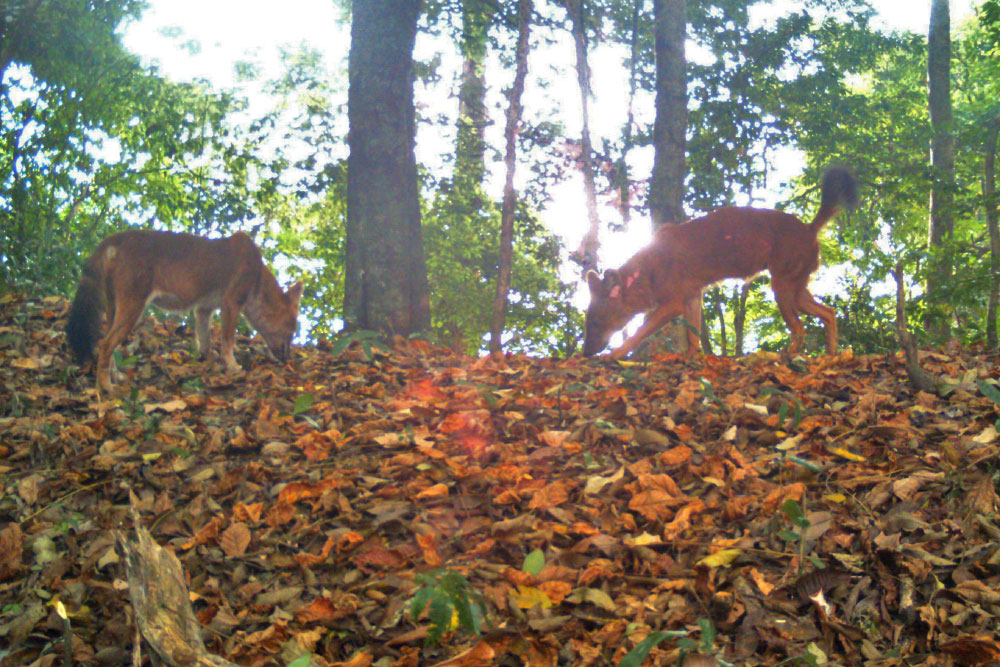Dholes or Asiatic wild dogs (Cuon alpinis) are among the least-studied large carnivores in the world. The IUCN Red List assessment (2015) categorizes the dhole as an Endangered species. With fewer than 2,500 mature individuals remaining in the wild – across 11 countries in South and Southeast Asia – the dhole may be facing a crisis far more severe than the tiger or elephant. India has the highest dhole population in the world, in three key landscapes: the Western Ghats, Central India and Northeast India. In the past few decades, scientists in India have taken greater interest in studying and understanding the species and its conservation requirements. But most of these studies have been focused on the Western Ghats and Central Indian populations.
In a recent collaborative study between Ecosystem-India and WildCRU, published in the Oryx — The International Journal of Conservation, researchers from WildCRU (University of Oxford), University of Florida (USA) and Wildlife Conservation Society–India set out to explore the current conservation status of dholes in Northeast India. The two key objectives of the study were to (1) understand the distribution of dholes in the northeastern States, and (2) explore what factors favour or hamper dholes inside a protected area (focusing on Dampa Tiger Reserve, Mizoram).
The study presents a compilation of recent information on dhole presence (2010 onwards) across nine States in northeast India (including West Bengal). Arunachal Pradesh and Assam had the highest number of records, followed by Mizoram and Nagaland. There were no recent records from Tripura and Manipur. Based on intensive camera trap surveys inside Dampa Tiger Reserve, the study showed a positive association of dhole presence with sambar deer and presence of forest guards, indicating the importance of prey species and protection efforts. Distance from the reserve boundary had a positive effect on dhole presence, suggesting the species prefers low levels of human-induced disturbance. Considered together, the study establishes that at a landscape level, dholes may have a wider distribution in northeast India than previously believed. With its undisturbed forests, high diversity and presence of medium- to large-sized ungulate prey, and contiguous forests, Dampa Tiger Reserve may an important refuge for dholes in northeast India.
Globally, dholes have disappeared from nearly 80% of their historical range. With a large expanse of forests contiguous with Myanmar and Southeast Asia, India’s north-eastern region is globally important, but has until now been scarcely surveyed for making conservation assessments of dholes. The recent study suggests that systematic surveys across select states of northeast India could help us gain crucial insights on dhole ecology, and formulate an integrated pan-northeast India conservation plan for the species.
Note: A different version of this article appeared on Oryx journal’s blog site.


 CI is a non-profit, non-commercial portal that aims to facilitate wildlife and nature conservation by providing reliable information and the tools needed to campaign effectively.
CI is a non-profit, non-commercial portal that aims to facilitate wildlife and nature conservation by providing reliable information and the tools needed to campaign effectively.